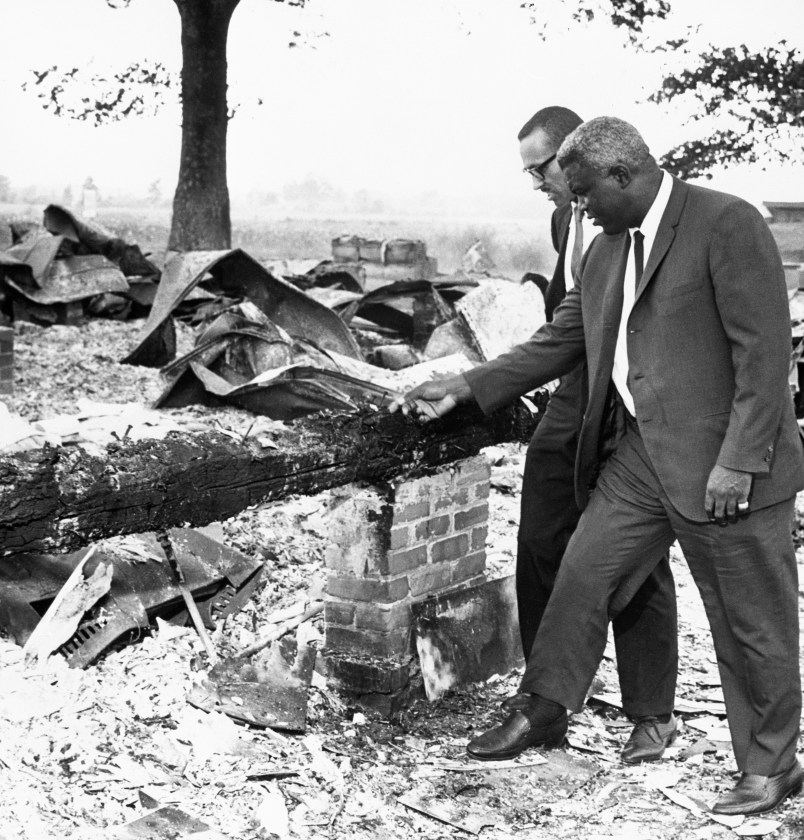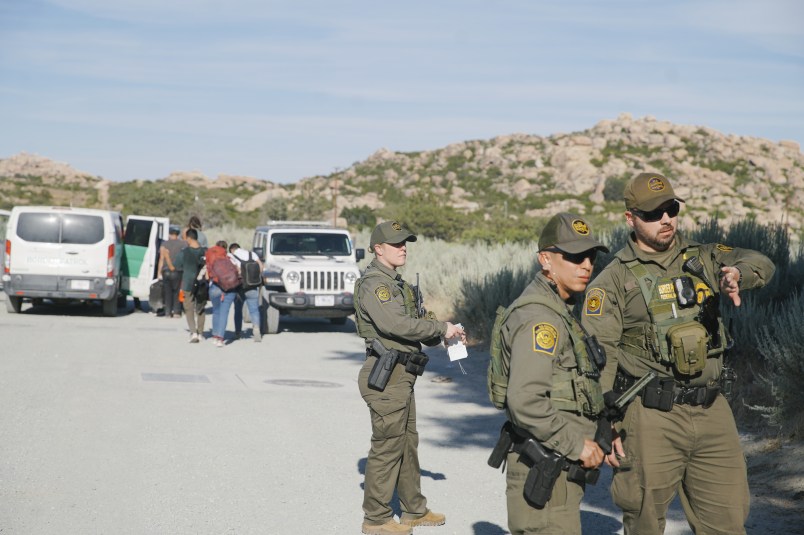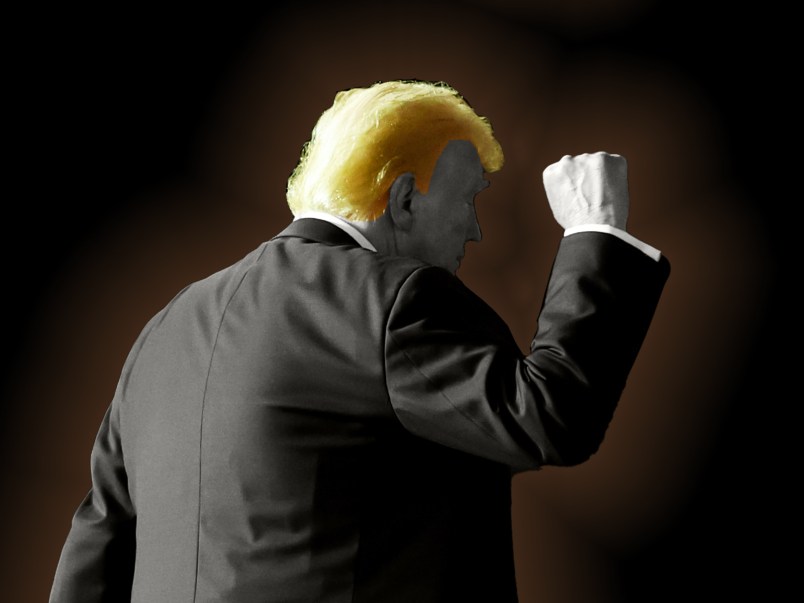This article is part of TPM Cafe, TPM’s home for opinion and news analysis. It is adapted in part from “The 100 Greatest Americans of the 20th Century: A Social Justice Hall of Fame.”
The growing controversy over public buildings, statues, and streets named for Confederate figures has reached the military. In late July, both houses of Congress passed an amendment to the $740 billion defense authorization bill to rename ten U.S. military bases that honor Confederate officers. Trump has threatened to veto it, tweeting that “my Administration will not even consider the renaming of these Magnificent and Fabled Military Installations. Our history as the Greatest Nation in the World will not be tampered with. Respect our Military!” Trump was also furious after Defense Secretary Mark Esper effectively banned displays of the Confederate flag on military bases.
Since it opened in 1942, Fort Hood has been named for John Bell Hood, a Kentucky-born West Point graduate who resigned his commission in the U.S. military in 1861 to join the Confederate army. He was promoted to major general in 1862. The military base that bears his name has become America’s largest.
Jackie Robinson, who broke baseball’s color line in 1947, is the most significant American to have ever been stationed at Fort Hood. Robinson served at Fort Hood from April to November in 1944.
Before joining the Army, Robinson had been UCLA’s first four-sport athlete (football, basketball, track, and baseball). He twice led basketball’s Pacific Coast League in scoring, won the NCAA broad jump championship, and became an All-American football player. He was better educated than most of the soldiers at Fort Hood. But, according to Robinson’s biographer, Arnold Rampersad, “Jack quickly found that his lieutenant’s bars meant little to whites at Camp Hood.”
The Black soldiers were quartered in the least desirable part of the camp in makeshift housing. Black officers like Robinson could not utilize the white officers’ club. Robinson, certainly Fort Hood’s best athlete, refused to participate in its segregated sports teams. Outside the base, Black soldiers in Central Texas faced blatant Jim Crow segregation in restaurants, movie theaters, parks, and bathrooms.
It was at Fort Hood that Robinson had one of the most transformative experiences of his life, one that, inadvertently, shaped the future of baseball and the country. On July 6, 1944, Robinson — a 25-year old lieutenant — boarded a military bus at Fort Hood and sat next to the light-skinned wife of another Black officer in the middle of the vehicle.
“Hey, you, sittin’ beside that woman,” the driver yelled. “Get to the back of the bus.”
Robinson refused, knowing that buses had been officially desegregated on federal military bases. When the driver threatened to have him arrested, Robinson shook his finger in the driver’s face and told him, “quit fucking with me.” Two military policemen soon arrived and escorted Robinson away.
Robinson faced trumped-up charges of insubordination, disturbing the peace, drunkenness, conduct unbecoming an officer, insulting a civilian woman, and refusing to obey the lawful orders of a superior officer. Unlike the routine mistreatment of many Black soldiers in the Jim Crow military, however, Robinson’s court-martial trial, on August 2, 1944, triggered stories in the African American newspapers and protests by the NAACP. Voting by secret ballot, the nine military judges (only one of them Black) found Robinson not guilty. In November, he was honorably discharged from the Army.
Describing the ordeal, Robinson later wrote, “It was a small victory, for I had learned that I was in two wars, one against the foreign enemy, the other against prejudice at home.”
Had Robinson lost his case and been dishonorably discharged, Brooklyn Dodgers general manager Branch Rickey would not have picked him to break major league baseball’s color line, and America would have been deprived of one of its greatest pioneers for racial justice. Indeed, whenever someone is identified as the first person to break a barrier, that individual is typically called that group’s Jackie Robinson.
On April 6, 2016, a plaque acknowledging Robinson’s association with Fort Hood was placed at the entrance to the base’s softball field. The inscription reads:
Lieutenant
Jackie R. Robinson
761st Tank Battalion Fort Hood, TX
1919-1972
United States Army, 1942-1944
Army Sports Program
Major League Baseball
Baseball Hall of Fame, 1962
This wording is ironic for two reasons. First, it sanitizes Robinson’s experience by ignoring the discrimination he encountered at Fort Hood. Second, placing the plaque at the entrance to a baseball field ignores the fact that Robinson refused to participate in baseball (and football) at the base because its teams were segregated.
Robinson spent his major league career (1947 to 1956) with the Brooklyn Dodgers. He was chosen Rookie of the Year in 1947 and Most Valuable Player in 1949. An outstanding base runner, with a .311 lifetime batting average, he led the Dodgers to six pennants and the only World Series the Dodgers won in Brooklyn. He was elected to the Hall of Fame in 1962 and died a decade later at age 53.
Off the field, he was outspoken — in speeches, interviews, and his regular newspaper column — against racial injustice. His success on the baseball diamond was a symbol of the promise of a racially integrated society. The dignity with which Robinson handled his encounters with racism among fellow players and fans — and in hotels, restaurants, trains, and other public places — drew public attention to the issue, stirred the consciences of many white Americans, and gave Black Americans a tremendous boost of pride.
Robinson was a proud patriot whose mistreatment by the Army did not dampen his love for his country. He believed that it was his patriotic responsibility to help the nation address its racial problems. He viewed his celebrity as a platform from which to challenge injustice. When his playing days were over, Robinson continued to be an outspoken activist, participating in civil rights marches and protests, raising money for the NAACP, Martin Luther King’s Southern Christian Leadership Conference, and the Student Non-Violent Coordinating Committee, and pushing baseball to hire Black coaches, managers, and executives. Public officials, activists, and writers sought his ideas and advice.
If America wants to make progress on racial injustice it must reckon with its racist past. Renaming Fort Hood in Robinson’s honor would be an important step toward racial reconciliation. It offers the Army an opportunity to honor an American icon, a military veteran who served his country with honor and distinction, who is recognized as a true American hero.
Peter Dreier teaches politics at Occidental College and is the author The 100 Greatest Americans of the 20th Century: A Social Justice Hall of Fame and the forthcoming Baseball Rebels: The Reformers and Radicals Who Shook Up the Game and Changed America.
Richard Zamoff teaches sociology at George Washington University and is director of the Jackie Robinson Project.










Thank you, Professors Dreier and Zamoff.
Motion seconded and approved…
Is there any reason we have to keep “fort” for all of these institutions? Forts had their purpose, it no longer exists. Can’t we just get rid of that part too?
You stole “second”… from me!